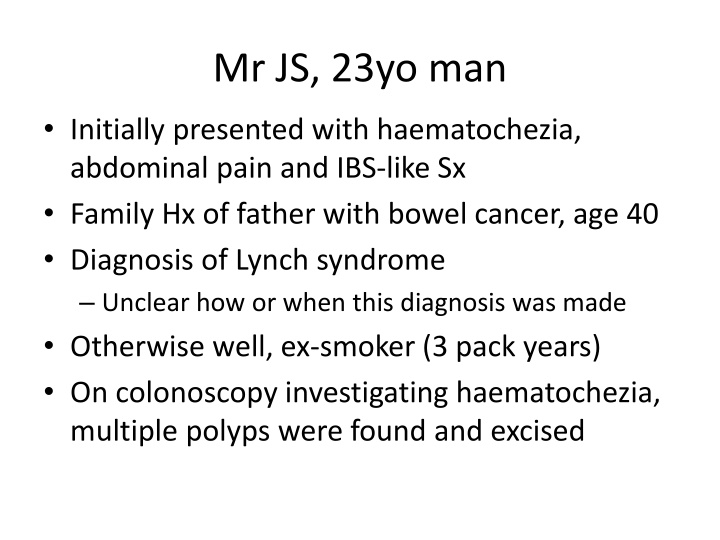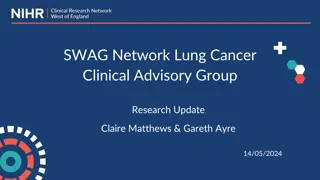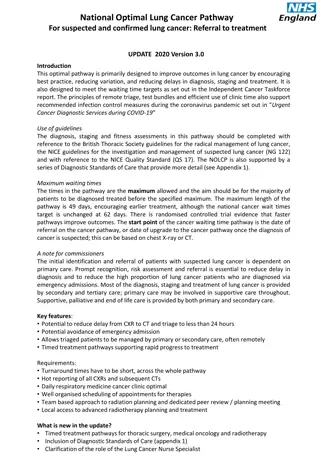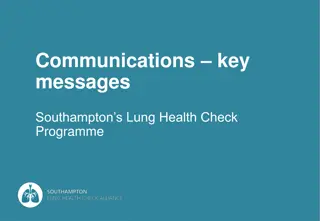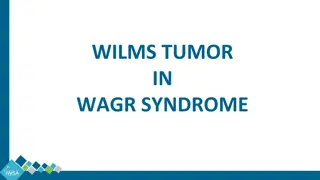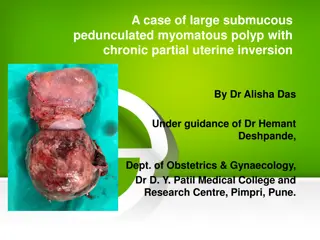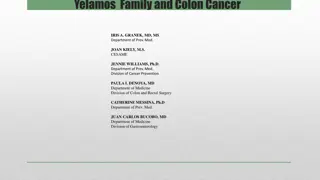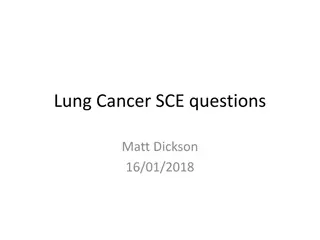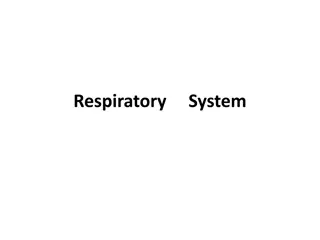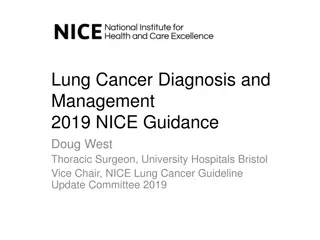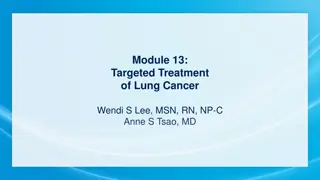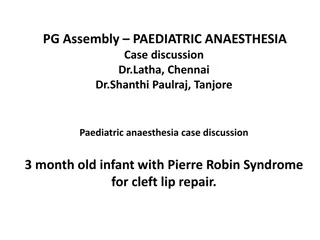Case Study: Mr. JS - Lynch Syndrome with Sigmoid Polyp and Lung Cancer
A 23-year-old man, Mr. JS, diagnosed with Lynch syndrome, presented with haematochezia and abdominal pain. Multiple polyps were found in a colonoscopy, including a malignant sigmoid polyp. He underwent total colectomy but developed complications like urinary symptoms and short bowel syndrome. A follow-up revealed lung cancer with signet ring cells morphology, treated with radiation and chemotherapy. Further management included a second-line chemotherapy regimen. This complex case highlights the challenges of managing multiple synchronous cancers in a young individual with a genetic predisposition.
Download Presentation

Please find below an Image/Link to download the presentation.
The content on the website is provided AS IS for your information and personal use only. It may not be sold, licensed, or shared on other websites without obtaining consent from the author.If you encounter any issues during the download, it is possible that the publisher has removed the file from their server.
You are allowed to download the files provided on this website for personal or commercial use, subject to the condition that they are used lawfully. All files are the property of their respective owners.
The content on the website is provided AS IS for your information and personal use only. It may not be sold, licensed, or shared on other websites without obtaining consent from the author.
E N D
Presentation Transcript
Mr JS, 23yo man Initially presented with haematochezia, abdominal pain and IBS-like Sx Family Hx of father with bowel cancer, age 40 Diagnosis of Lynch syndrome Unclear how or when this diagnosis was made Otherwise well, ex-smoker (3 pack years) On colonoscopy investigating haematochezia, multiple polyps were found and excised
Malignant sigmoid polyp (sessile serrated adenoma) Subsequent staging investigations confirmed T1N0M0 disease
Synchronous tubular adenoma with low grade dysplasia
Treatment of the Colon Ca Diagnosed with Lynch syndrome Unclear how or when this diagnosis was made Underwent total colectomy for definitive treatment of colon cancer and prophylaxis No neoadjuvant or adjuvant therapy at this time Complications of this treatment: Urinary symptoms, incl. pis-en-deux, trouble initiating and urinary retention Short bowel syndrome
Follow up CT Chest at 1 year follow up showed: 14mm LLL lesion L) hilar and aortopulmonary lympadenopathy These areas were shown to be intensely avid on FDG-PET CT Abdo at this time showed (non-avid): Small calcified opacities Bulky L) adrenal, nil definite mass 2x small mesorectal nodes
Biopsy EBUS and biopsy was undertaken Results: Poorly differentiated adenocarcinoma Signet ring morphology TTF1 and CK7 +ve CK20 and CDX2 ve This IHC is consistent with primary lung adenocarcinoma
Initial treatment of the Lung Ca Not resectable RT to the chest Complicated by severe radiation oesophagitis Requiring 2/52 admission for IV fluid therapy Coupled with sensitising CTx regime Cisplatin/Etoposide
Progress Repeat PET following radiochemotherapy Hilar nodal disease shrunk, although remained avid New avid areas L5 transverse process L) adrenal 2nd line CTx with Carboplatin/Pemetrexed
Chemotherapy SEs He is troubled by fatigue and severe stabbing headaches Other SEs he has experienced include: Nausea Hiccoughs Hot flushes Sleep disturbance Nosebleeds
Social Hx Lives at home with parents and older sister Has a girlfriend Works as a partner manager, previously full time Now works from home when able Father has not been formally diagnosed with Lynch syndrome Others in the family are considering screening They are all extremely worried for him
Social Hx (cont.) Otherwise he is active, getting out of the house on days when he feels well enough ECOG 1, symptoms limiting him only sometimes Sees friends often, goes to parties, etc.
Lynch syndrome Hereditary cancer syndrome, mediated by mutation to one of several DNA mismatch repair genes Examples include MLH1, MSH2, MSH6 and PMS2 Phenotypically expressed as increased risk of several types of cancer (~30-50% risk), including: Bowel Endometrial Ovarian Renal pelvis TCC No proven association with lung cancer
Screening for hereditary Ca syndrome Genetic screening based on probability of gene being found Funded test if probability >10% Bowel cancer at a young age alone is not necessarily enough to score a test FHx feature typical of a hereditary syndrome: Multiple cancers in the family Young age at onset of cancer Multiple cancers in the same individual In Lynch, tumour typing may involve tests for MMR and MSI, which detects additional cases
Bowel Ca screening Population Average risk individuals: FOBT funded at 50, 55, 60 and 65 years Recent budget included provisions for 2 yearly FOBT for those aged 50-74, to be phased in by 2020 Moderate risk individuals: 5 yearly colonoscopy from age 50 or 10 years before earliest diagnosis in the family High risk individuals: Consider referral to a family cancer clinic Lynch syndrome Colonoscopy every 1-2 years from 25 years, or 5 years from earliest diagnosis in the family - Cancer Council guidelines (2008) Screening for other cancers associated with Lynch may be indicated, i.e. haematuria/urine cytology
Cancer prophylaxis in Lynch Aspirin 600mg d (CAPP2 trial) Highly significant decreased risk of cancer vs. potato starch No significant difference in adverse events while on aspirin Surgical prophylaxis Total colectomy Hysterectomy + salpingoophrectomy
